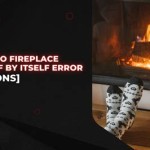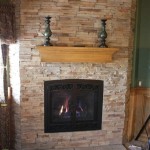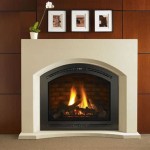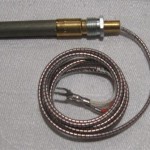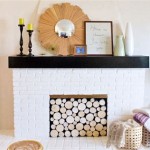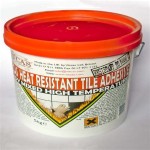Vermont Fireplace Inserts: Enhancing Efficiency and Aesthetics
Vermont fireplace inserts offer a practical and visually appealing solution for homeowners seeking to improve the heating efficiency of their existing fireplaces. Designed to fit directly into the firebox of an open fireplace, these inserts transform a traditionally inefficient heating source into a more effective and controllable heat provider. The selection and installation of a Vermont fireplace insert require careful consideration of various factors, including heating needs, aesthetic preferences, and adherence to safety standards. Understanding the different types of inserts available, their operational characteristics, and the regulatory landscape surrounding their use is crucial for making an informed decision.
Types of Vermont Fireplace Inserts
Vermont fireplace inserts primarily fall into three categories: wood-burning, gas-burning, and electric. Each type possesses distinct advantages and disadvantages, impacting their suitability for different applications. The selection process should be guided by an individual's specific requirements and priorities.
Wood-burning inserts are favored for their ability to provide substantial heat output and create a traditional fireplace ambiance. They burn seasoned firewood, offering a renewable energy source and a familiar aesthetic. However, wood-burning inserts require manual fueling and regular cleaning to remove ash and creosote. The efficiency of a wood-burning insert is heavily influenced by the type and dryness of the wood used, as well as the insert's design and combustion technology. Modern wood-burning inserts often incorporate features like catalytic combustors or secondary combustion systems to maximize heat extraction and minimize emissions. Regulatory compliance is also a significant consideration, as wood-burning inserts must meet EPA standards for particulate matter emissions.
Gas-burning inserts offer a convenient and controllable heating solution. They operate on either natural gas or propane, providing a consistent and readily available fuel source. Gas inserts can be easily ignited and adjusted using a remote control or thermostat, offering precise temperature control. They also require less maintenance than wood-burning inserts, as they produce minimal ash and creosote. The aesthetic options for gas inserts are diverse, ranging from realistic log sets to contemporary glass media. While gas inserts offer convenience, they rely on a fossil fuel source and may be subject to fluctuating fuel prices. Venting requirements are also critical, as gas inserts must be properly vented to the outside to prevent the buildup of carbon monoxide.
Electric fireplace inserts provide a simple and versatile heating option that does not require venting. They operate on standard electrical power and can be easily installed in existing fireplaces. Electric inserts offer a range of aesthetic options, including realistic flame effects and customizable lighting. They are also relatively energy-efficient, as they convert nearly all of the electrical energy into heat. However, electric inserts typically have a lower heat output compared to wood-burning or gas-burning models. They are best suited for supplemental heating in smaller areas. Their ease of installation and operation makes them a popular choice for homeowners seeking a hassle-free heating solution.
Factors Affecting Heating Efficiency
The heating efficiency of a Vermont fireplace insert depends on several factors, encompassing the insert's design, installation, and operational practices. Addressing these aspects is paramount for maximizing heat output and minimizing energy consumption.
Insert design and technology play a crucial role in determining heating efficiency. Modern inserts often incorporate advanced combustion technologies, such as catalytic combustors or secondary air systems, to promote more complete combustion of fuel. This results in higher heat output and lower emissions. Features like insulated fireboxes and tightly sealed doors also help to retain heat and prevent drafts. The size and design of the heat exchanger, which transfers heat from the firebox to the surrounding air, also significantly impacts efficiency. Inserts with larger and more efficient heat exchangers can extract more heat from the combustion process.
Proper installation is essential for ensuring optimal heating performance. The insert must be correctly sized for the fireplace opening and properly sealed to prevent air leaks. The venting system must also be installed according to manufacturer specifications to ensure proper draft and prevent the buildup of dangerous gases. A professional installer can assess the fireplace and chimney to determine the appropriate insert size and venting requirements. They can also ensure that the insert is properly installed and connected to the fuel supply, if applicable. Neglecting proper installation can lead to reduced heating efficiency, increased emissions, and potential safety hazards.
Operational practices also influence the heating efficiency of a fireplace insert. For wood-burning inserts, using seasoned firewood is crucial. Dry wood burns more efficiently and produces less smoke and creosote. Properly stoking the fire and controlling the airflow can also optimize combustion. For gas-burning inserts, setting the thermostat to a comfortable temperature and avoiding excessive use can help conserve fuel. Regular maintenance, such as cleaning the glass door and inspecting the venting system, is also important for ensuring optimal performance. Following the manufacturer's recommendations for operation and maintenance can extend the lifespan of the insert and maximize its heating efficiency.
Safety and Regulatory Considerations
The safe operation of a Vermont fireplace insert requires adherence to strict safety guidelines and compliance with relevant regulations. Addressing these aspects is crucial for preventing accidents and ensuring the well-being of occupants.
Venting requirements are paramount for all types of fireplace inserts, except for electric models. Wood-burning and gas-burning inserts must be properly vented to the outside to prevent the buildup of carbon monoxide and other dangerous gases. The venting system must be installed according to manufacturer specifications and local building codes. Regular inspections of the venting system are essential to ensure that it is free of obstructions and in good working order. Carbon monoxide detectors should be installed in the home to provide an early warning of any potential leaks. Proper venting is crucial for ensuring safe and efficient operation of the fireplace insert.
Clearance requirements are also critical for preventing fires and ensuring safe operation. Fireplace inserts generate significant heat, and combustible materials must be kept a safe distance away from the insert. Manufacturers typically specify minimum clearance distances to walls, floors, and ceilings. These clearances must be strictly adhered to during installation. Non-combustible materials, such as brick or stone, can be used to reduce clearance requirements. Regular inspections of the area around the fireplace insert are essential to ensure that combustible materials are not placed too close to the heat source.
EPA regulations apply to wood-burning fireplace inserts, mandating limits on particulate matter emissions. Inserts that meet EPA standards are certified as clean-burning and produce significantly less smoke and pollution. Homeowners should only purchase EPA-certified wood-burning inserts to minimize environmental impact and ensure compliance with local regulations. Some municipalities may also have additional regulations regarding wood-burning appliances, such as restrictions on the types of wood that can be burned or requirements for permits. It is essential to check with local authorities to ensure compliance with all applicable regulations.

Vermont Castings Montpelier Ii Woodburning Fireplace Insert Fergus

Vermont Castings Montpelier Hearth S Great American Fireplace In Menomonie Wi

Vermont Castings Merrimack The Fireplace King Huntsville Ontario Muskoka For Your Heating Cooling And Grilling Needs

Vermont Castings Montpelier Ii Wood Insert Best Fire

Vermont Castings Fireplace Inserts For Beautiful Heat Woodstoves Patio

Vermont Castings Merrimack Non Catalytic Wood Burning Insert The Fireplace Club

Vermont Castings Montpelier Ii Wood Burning Insert Advanced Chimney Systems

Vermont Castings Wood Fireplace Inserts Forge Flame

Vermont Castings Montpelier Wood Insert Newtown Fireplace

Home Projects Vermont Castings Montpelier Insert Auburn Energy Center
Related Posts

